Why cabbage leaves turn purple and what to do about it
Cabbage is a healthy vegetable that is found in almost every summer cottage. It is unpretentious in care and, subject to the rules of cultivation, gives a rich harvest. However, it happens that its leaves turn blue or take on a purple hue. This article will help you understand the causes of the problem and how to fix it.
The content of the article
Why cabbage leaves turn purple
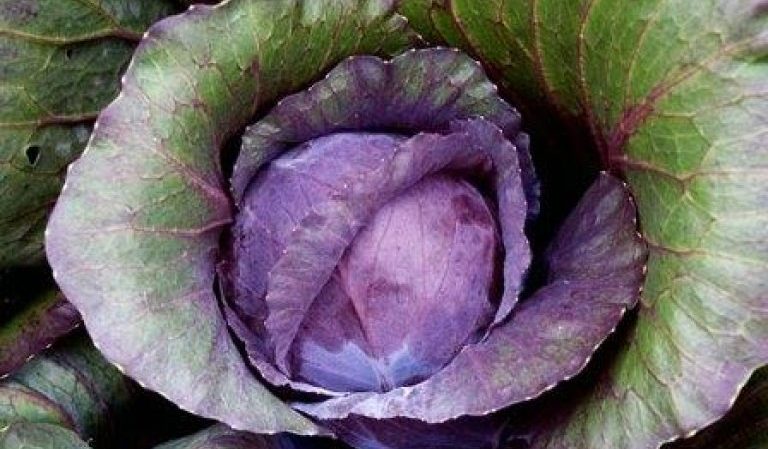
The usual white leaves with a greenish tint can change color to blue or purple for the following reasons:
- Lack of nitrogen... This not only changes the color of the leaves, but also stops the development of the heads of cabbage. Most often, early varieties suffer from this in the spring, when, due to rainy weather, the vital activity of the soil microflora decreases, and nitrogen is supplied to the seedlings in small quantities.
- Lack of phosphorus. In addition to the appearance of a purple color, there is a decrease in the volume of leaves and a slowdown in the development and formation of the fork.
- Stress of seedlings when transplanting into open ground... This temporary phenomenon disappears within 7-10 days.
- Sudden changes in temperature, frost and cold snap. This happens if the seedlings were not hardened by being in the open air or transplanted into the soil that is not heated to the required minimum (+ 14 ... + 16 ° C).
- Insufficient watering or waterlogging of the soil. Cabbage loves water, but with an excess of it, the foliage darkens, the root rot, and the plant dies. Dry soil over time becomes the cause of dry leaves, their hardness and a blue tint.
- Manifestation of a fungal disease black legfrom which cabbage is not protected at any stage of development. Due to damage to the root system by the fungus, the nutrition of the plant is suspended, which affects the color of the leaves and leads to the death of the cabbage.
- Keel manifestation... Signs of this disease are blue leaves and wilting of the plant, most noticeable at noon. Growths form on the root system, blocking access to nutrients.
- Pests, in particular aphids and cabbage flies. If aphids are easy to spot, then the cabbage fly larvae are located in the plant stems and gnaw through whole tunnels inside the cabbage.
The quality and quantity of the crop largely depends on the preparation of the seedlings. Do not neglect hardening and plant strong, healthy shoots in the ground without damage and signs of fungal diseases.
What to do if cabbage has purple leaves
Most often, a change in the greenish color of foliage to purple is a signal to the need to take measures to eliminate negative factors.
Top dressing
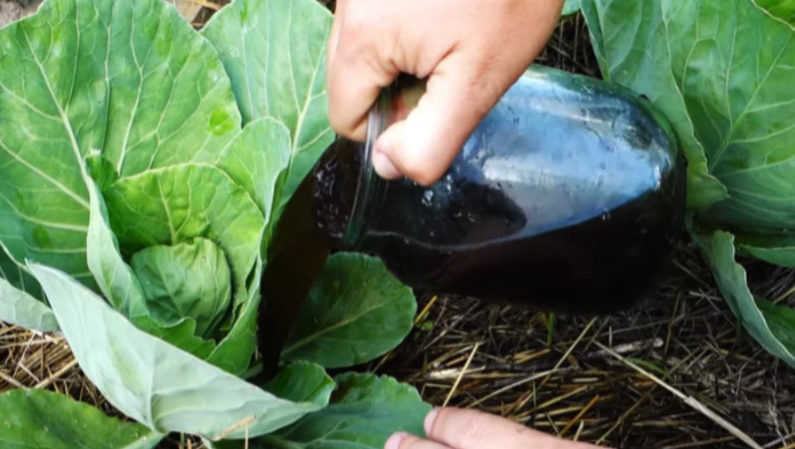
If the weather conditions are comfortable outside, and no traces of disease or insects were found during an external examination, measures are taken for additional feeding blue cabbage:
- Lack of phosphorus is replenished by the introduction of liquid fertilizer "Izagri". In addition to phosphorus, the composition contains the components necessary for its assimilation. Experienced gardeners also use superphosphate (100 g for 1 bucket of water) and double superphosphate (50 g for 1 bucket of water). Or dilute 1 tsp in 1 liter of water. bone meal. Fertilize with rotted manure or chicken droppings (3 kg per 1 sq. M).
- The acidity of the soil affects the absorption of phosphorus. The higher this indicator, the worse the microelement is absorbed. Cabbage grows well in loamy soil with neutral (or close to neutral) acidity - 6.2-7.5.Lime or dolomite flour, wood or peat ash, chalk or hydrated lime can help lower the pH.
- If the reason for the blue discoloration is a lack of nitrogen, the problem is solved by the introduction of rotted manure (3-4 kg of raw materials per 1 sq. M.). A solution of mullein (1:10), ammonium nitrate (20 g per 10 l) or urea (30 g per 10 l) is also used.
With excessive precipitation, waterlogging of the soil should not be allowed, therefore, the beds are covered with plastic wrap if possible. Grooves are led from the beds for the outflow of water, and the soil is loosened daily 3-5 cm in depth. If the reason for the change in the color of the leaves is the dryness of the soil, watering is increased by adding 2-3 liters of water under each plant by the drip method.
Important! After applying the necessary fertilizers and leveling the moisture content of the soil, the blue from the cabbage foliage will disappear no earlier than 10-14 days.
Protection against temperature drops
Most cabbage varieties are cold resistant, but sudden changes in temperature cause the leaves to turn blue.
To prevent discoloration and taste deterioration, take the following measures:
- the beds are insulated with agrofibre or spunbond: when the temperature drops to -10 ° C, white agrofibre is used, which also protects against snow and hail;
- the soil is mulched with peat, humus or straw;
- wait for warmth - blueing goes away on its own.
Prevention of diseases and pests
If the blue color of the cabbage foliage has manifested itself due to disease or pests, the plant is saved using the following methods.
Blackleg
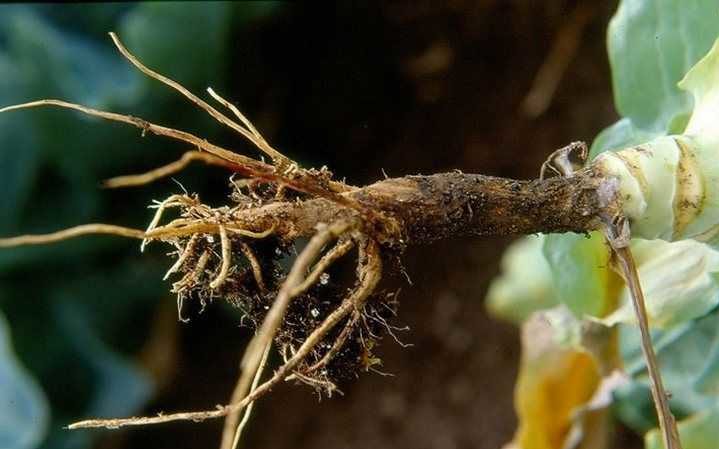
Before planting, the sprouts are examined for signs of disease, the affected seedlings are discarded. The same is done with adult plants to prevent further spread.
With a slight lesion, the soil is treated with a weak solution of potassium permanganate - 1 liter for each bush. Strong spread is stopped with "Fundazol" or "Planriz". If the disease continues to develop, the plants are uprooted, and the soil is disinfected with a 1% solution of potassium permanganate or copper sulfate.
For prophylaxis, use a solution of calcium nitrate or lime milk (for 10 liters of water 1 tbsp. Lime). The black leg often appears due to shade and lack of air, so cabbage is planted according to a certain pattern: 70 cm between plants and 80 cm between rows.
Keela
When infected, diseased bushes are removed and burned. In their place, plants are planted that are not susceptible to this disease, since the pathogens remain in the soil for up to 7 years. For prophylaxis, 3 tbsp is poured into the landing hole. l. ash or 1 tbsp. l. calcium nitrate. The additive is poured into 1.5 liters of water. P
The increased acidity of the soil provokes the appearance of the keel, therefore, if this indicator is higher than the norm, the soil is liming (200 g per 1 sq. m).
Cabbage fly
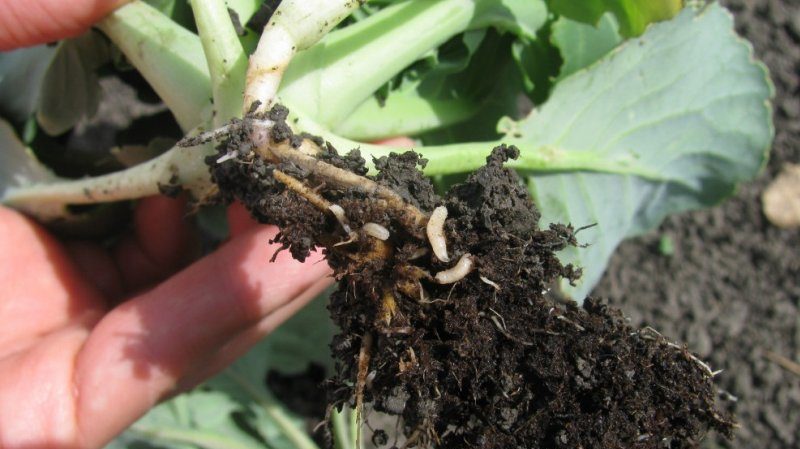
When the cabbage fly is infested, the plantings are treated with Karbofos or Topaz. Useful neighbors can scare off the pest: parsley, wormwood, marigolds. Once a month, the bushes are powdered with black pepper and dry mustard (1: 1).
Aphid

Aphids are destroyed with Fitoverm. For prophylaxis, dusting with ash or spraying with garlic broth is used (400 g of heads in husks are boiled for 2 hours in 10 liters of water), a solution of yarrow (1/3 of a bucket is poured with boiling water and infused for several hours) or an infusion of citrus peels (1 kg per 10 liters) ...
How to avoid the purple leaf problem in cabbage
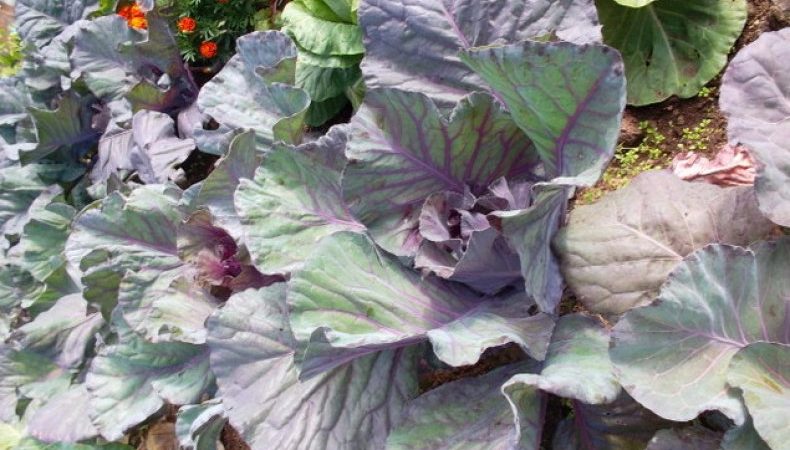
So that growing cabbage does not cause trouble, follow simple rules:
- varieties for planting are chosen based on the climatic conditions of the region;
- seeds before planting on seedlings are soaked in a weak solution of potassium permanganate;
- before being transferred to open ground, the seedlings are hardened by being outdoors, starting from 30 minutes and ending with a full daylight;
- the soil for cabbage should be with a neutral or close to neutral pH;
- observe the rules of crop rotation: cabbage is not planted after plants with which it has common diseases (radish, radish);
- well-lit areas are chosen for planting, keeping 70 cm between plants and 80 cm between rows;
- the soil is not waterlogged and does not allow it to dry out;
- spend on time top dressing and preventive measures to control diseases and pests.
Read also:
Early ripe hybrid of cabbage Krautkayser F1
Nozomi f1 ultra-early ripening cabbage hybrid
Why is Romanesco cabbage useful, what it looks like in the photo, is it difficult to grow it
Conclusion
Sticking to simple rules for caring for cabbage and using the tips from our article, even beginners will get a rich harvest with juicy and tender white-green leaves.
Monitor plant nutrition, carry out preventive treatments against pests and diseases, protect cabbage from temperature changes, and then you will not face the problem of blue foliage.